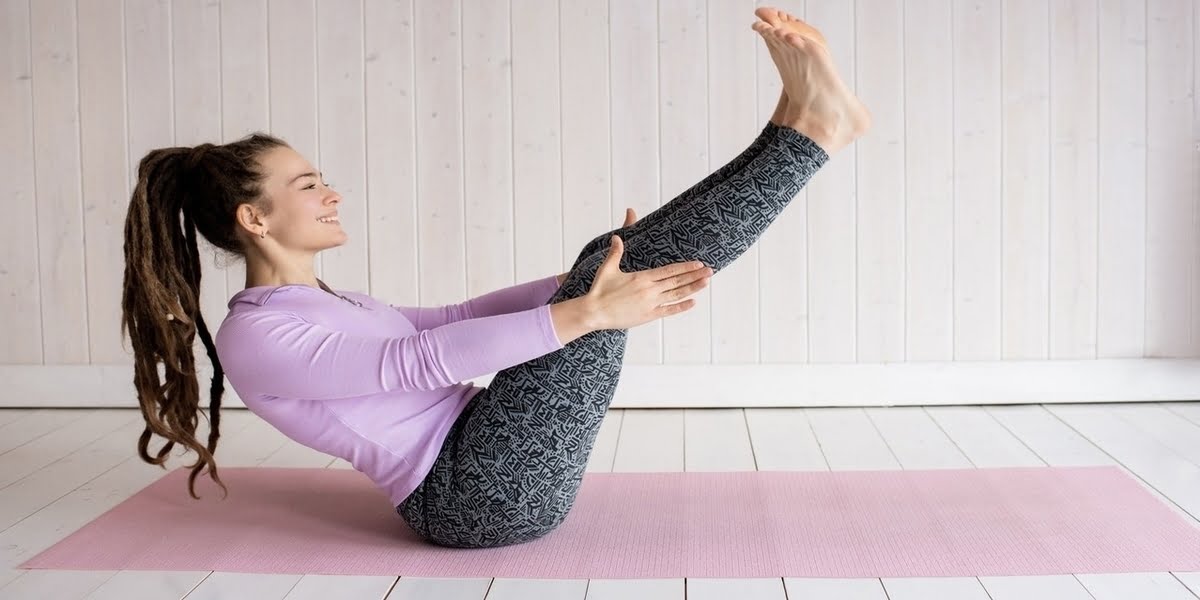First things first; both men and women have a pelvic floor.
When we breathe during Pilates exercises we engage our core muscles, bringing our belly button towards our spine and contracting our pelvic floor muscles at the same time.
But what are these mysterious pelvic floor muscles that get referred to so much?
Let me unravel the mystery for you. I hope you’re not squeamish because there are lots of anatomic references in this blog!
What is the pelvic floor?
The pelvic floor is a sheet of muscles that runs from your pubic bone to your tailbone. It provides the floor to your pelvis. Think of it as a big sling running from the front of your body to the back.
The pelvic floor supports the following organs and controls the openings to them so they don’t ‘let go’ when you least expect it:
- Bladder and urethra — the opening which you pass urine through
- Uterus and vagina — the opening of the birth canal (women)
- Bowel and anus — the opening which you pass stools through
Why you need to strengthen it
Strengthening the pelvic floor helps keep your organs properly supported and ensures the openings to those organs don’t ‘let go’ and open at the wrong time. Phew.
Why it weakens
The pelvic floor can weaken:
- Due to lack of exercise
- By straining to open your bowels
- Due to being overweight
- After a chronic cough
- Repeated heavy lifting
- Following surgery e.g. hysterectomy (women), prostate surgery (men)
- Following childbirth (women)
- As a result of the menopause (women)
How you can strengthen it
The good news is you can strengthen your pelvic floor through exercise. The bad news is that you’re going to have to commit to exercising it regularly for the rest of your life to maintain the benefits. Sorry guys!
Pelvic floor exercises
Lie on your back with both knees bent, legs hip distance apart and both feet flat on the floor. Place your arms by your sides.
Slow twitch exercises
These exercises work the slow twitch muscle fibres. These fibres have constant tone in them and are working in the background (even while you are asleep) to support your pelvic organs and prevent the openings to them ‘letting go’.
- Close and draw up the muscles around your anus, as if you are trying to stop passing wind. Make sure that you do not contract your buttock muscles while you do this.
- Continue to close and draw up the muscles around your vagina (women only), followed by your urethra, as though you are trying to stop the flow of urine.
- Hold for as long as you can. Try not to hold your breath, breathe normally. Then slowly relax. Rest for the same amount of time. For example, hold for a count of 8 and then relax for a count of 8.
- Repeat until your muscles feel tired.
- Over time increase the length of time you hold each contraction for.
Fast twitch exercises
These exercises work the fast twitch muscle fibres, which contract strongly and quickly to prevent things like urine leakage when there is extra pressure on the bladder e.g. when you sneeze.
- Quickly pull up all the pelvic floor muscles.
- Hold for one second and then slowly relax.
- Repeat until your muscles feel tired.
Aim to do the exercises on a daily basis and be sure to include both types — slow twitch first, followed by fast twitch.
It will take several weeks of regular exercise to develop your strength. If you do not see a change after three months make an appointment with your GP.
Technique
It’s important to try not to do any of the following or you won’t be contracting your muscles correctly:
- Squeeze your buttocks together
- Bring your knees together
- Hold your breath — breathe normally as your perform your exercises
- Lift your shoulders
- Lift your toes
Focus on quality over quantity. It’s better to do five great repetitions than 10 bad ones.
Pilates and the pelvic floor
You might have noticed that the pelvic floor exercises described above require you to contract the entire pelvic floor (from the front of your body to the back). This is different to the contraction we perform in a Pilates class. In Pilates we focus on contracting the opening to the bladder only. This is because it can be tricky for people to contract their entire pelvic floor without contracting their buttock muscles and tensing up their entire body.
Knowing this difference will help you get the best from your Pilates classes and from your pelvic floor exercises.
